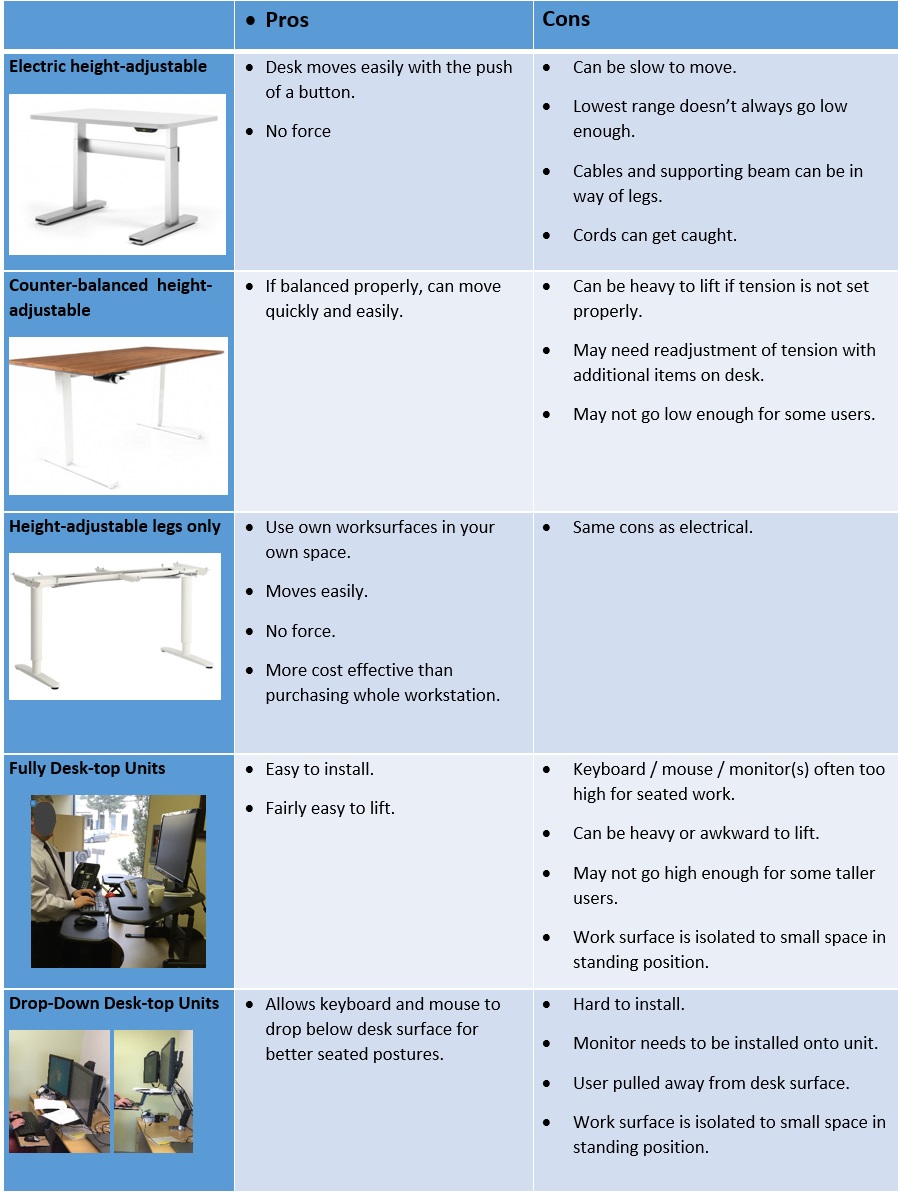
- Nov 22, 2017 |
- Ergonomics Blog, Posture, Repetitive Strain Injury, Sit to Stand Options
Sit-Stand Desks: What are the Best Choices?
HAVE YOU HEARD?? WHAT ARE THE BEST SIT-STAND PRODUCTS?
“Sit-stand desks” are what everyone in the office is talking about these days. If you don’t have one, you are desperate to get one. If you work in the Office Facilities department, you are probably inundated with requests for them. If you are a vendor, you are recommending them to everyone.
This isn’t new – they’ve been around for a number of years now, but what is new is the sheer number of options available. This article is going to break down those options for you and describe the pros and cons and best choices to give you an idea of what to look for and consider when your employees ask for one.
Myth or Fact? Standing to work at your computer during the day is essential? MYTH. It is not necessary to have a sit-stand desk at your computer workstation, however, it is important that movement be built into your day. If a person has no choice but to perform computer work all day, then a sit stand desk can offer some movement but it is definitely not the only movement that should occur. And it is not helpful to switch someone to a standing-only desk, where they stand statically all day.
Need or Want? Facilities managers are often inundated with requests for sit-stand desks, some of which are legitimate ‘needs’ but others are ‘wants’. Anderson Ergonomics consultants have expertise in assessing the workplace to determine whether someone actually ‘needs’ a sit stand desk or whether it is just a want. We use a number of professional criteria to determine this during an ergonomic assessment and can help ensure the workstation is set up properly no matter what. Contact us for more information
If it is determined that a sit-stand desk is in order, there are many options on the market to enable this alternation of postures. Whether the alternation is actually done or not is a different story and how to achieve success with people using them will be the focus of my next blog. But for now, let’s focus on the types of choices you have and what you should be considering.
The following categories of sit-stand desks are currently on the market:
- Electric or counter-balanced height adjustable desks
- Electric or counter-balanced legs that attach beneath your current desk surfaces
- Height-adjustable desk-top units
Summary of Pros and Cons of each:

So, What’s Best?
Your best choice is to purchase an electric or counter balanced height-adjustable work surface or the “legs” that can be added onto your own surfaces. These are more expensive than the desk-top units but not by that much and their pros outweigh the cons of the other units. If this option is not available to you, then consider the type of work being done (i.e. how much the work space to the sides of the computer area is needed when standing to work) and whether something like a document holder or alternatives could be useful. If you do purchase a desk-top unit where the monitors attach into the unit, make sure that your installer (or an IT person) helps you to hook everything up.
In Need of Guidance?
If you are looking for guidance on whether a sit-stand desk is right for you or how to develop a policy in your company for the purchase, deployment, and education around usage of sit-stand desks, Anderson Ergonomics Consulting can help. Please contact us for more information.
**And stay tuned for our next blog on how to properly use a sit-stand desk.



